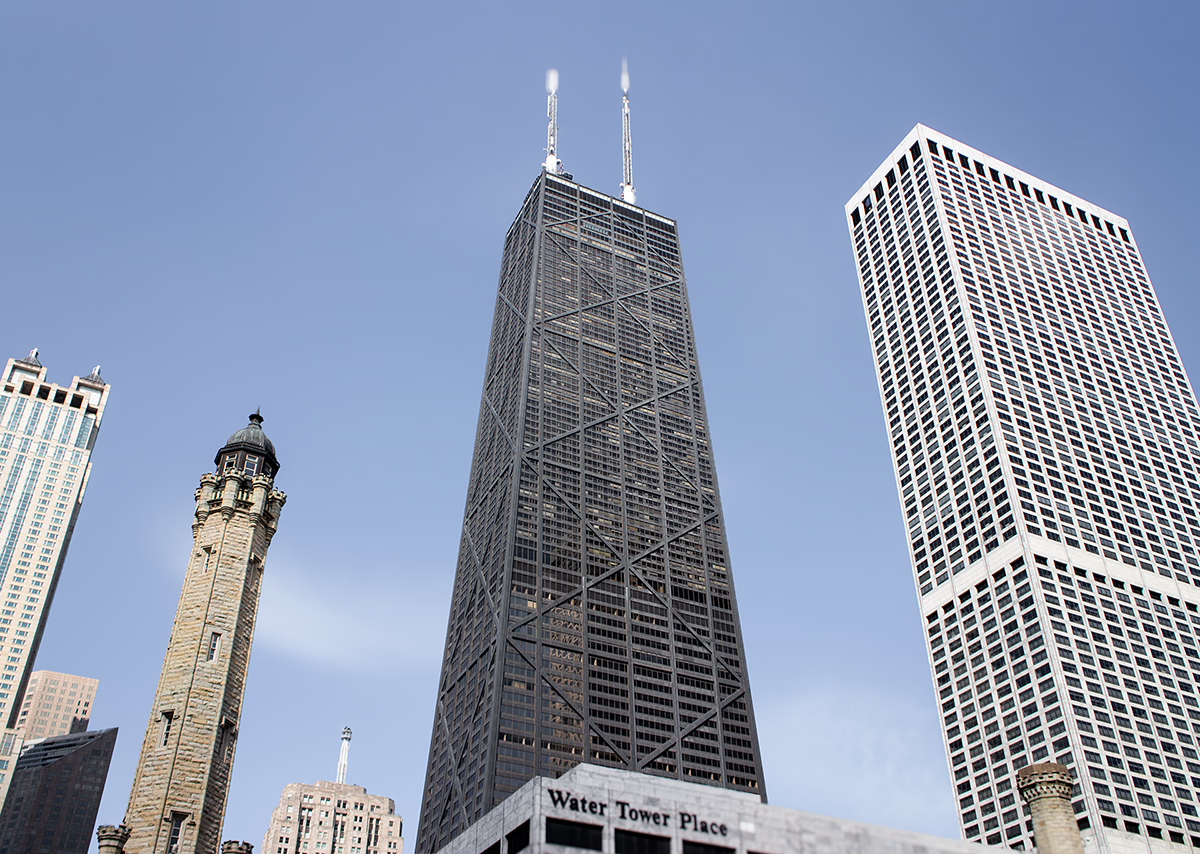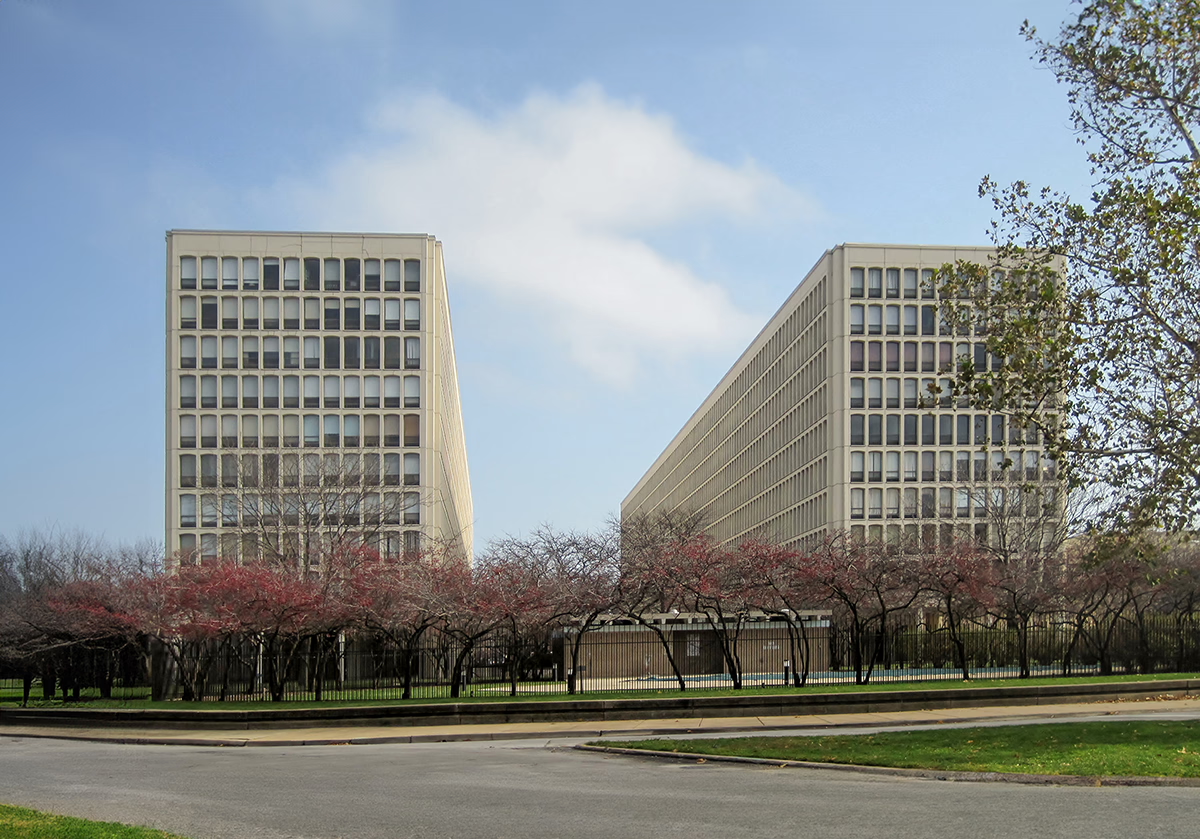John Hancock Center vs University Apartments


Comparing the John Hancock Center and the University Apartments is interesting because they both rise in Chicago, IL, yet they were conceived by two different design teams, Skidmore, Owings & Merrill and I. M. Pei, and were completed at different points in time. They were finished more than 8 years apart.
This contrast within the same city allows us to see how different creative minds interpreted the evolving needs of Chicago across time.
Let's take a closer look!
Height & Size
The John Hancock Center is clearly the larger tower of the two, both in terms of height and number of floors. It rises to 1129ft (344m) with 100 floors above ground, while the University Apartments reaches 308ft (94m) with 10 floors above ground.
Of course, each project may have faced different briefs or regulatory constraints, which we don't really know about and could also explain the outcome.
Architectural Style
Both the John Hancock Center and the University Apartments were designed in line with the aesthetic conventions of the International Style style.
At the time, this style was at the height of its popularity. So both Skidmore, Owings & Merrill and I. M. Pei followed what was in many ways expected of them, producing designs that fit comfortably within contemporary architectural norms, rather than breaking with convention.
Uses
The John Hancock Center is primarily , while the University Apartments is primarily residential.
In terms of capacity, the John Hancock Center offers 703 apartments, while the University Apartments provides 540 units.
Both towers provide significant parking capacity, with John Hancock Center offering 710 spaces and the University Apartments offering 220.
Structure & Facade
The two towers rely on different structural systems, reflecting distinct engineering strategies.
The John Hancock Center uses a Trussed Tube In Tube structural system, which combines a central core with a perimeter tube reinforced by diagonal bracing, while the University Apartments uses a Frame system, that relies on a regular grid of columns and beams to sustain its weight.
Yet, when it comes to their facade, they both employed the same solution, a Window Wall facade.
A window wall system is installed between floor slabs. It is simpler and faster to build than curtain walls, but exposes slab edges and requires careful detailing to avoid thermal bridges.
| John Hancock Center | University Apartments | |
|---|---|---|
| Skidmore, Owings & Merrill | Architect | I. M. Pei |
| 1965 | Construction Started | 1959 |
| 1969 | Year Completed | 1961 |
| International Style | Architectural Style | International Style |
| 100 | Floors Above Ground | 10 |
| 1 | Floors Below Ground | 1 |
| 344 m | Height (m) | 94 m |
| 50 | Number of Elevators | 8 |
| 703 | Residential Units | 540 |
| Trussed Tube In Tube | Structure Type | Frame |
| Steel | Vertical Structure Material | Concrete |
| Concrete | Horizontal Structure Material | Concrete |
| Yes | Facade Structural? | Yes |
| Steel, Glass | Main Facade Material | Glass, Concrete |
| Fazlur Rahman Khan, And Srinivasa Iyengar | Structural Engineer | August Komendant |
| IL | State | IL |
| Chicago | City | Chicago |
| 875 North Michigan Avenue | Address | 1400 1451 E.55th Street |